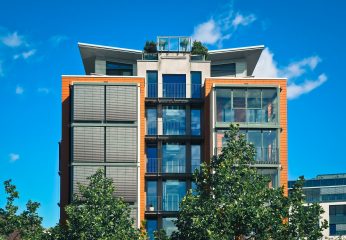Green Buildings & LEED
 What are Green Buildings?
What are Green Buildings?
According to the U.S. Green Building Council, in the United States buildings account for:
36% of total energy use
65% of electricity consumption
30% of greenhouse gas emissions
30% of raw materials use
30% of waste output —136 million tons annually
12% of potable water consumption
High performance or green buildings minimize their environmental impact, improve the comfort of their occupants, and minimize strain on local infrastructure. Typical green buildings incorporate the following features:
- Careful site selection to minimize impacts on the surrounding environment and increase alternative transportation options.
- Energy conservation to ensure efficient use of natural resources and reduced utility bills.
- Water conservation to ensure maximum efficiency and reduced utility bills.
- Responsible stormwater management to limit disruption of natural watershed functions and reduce the environmental impacts of stormwater runoff.
- Waste reduction, recycling, and use of “green” building materials.
- Improved indoor air quality through the use of low volatile organic compound products and careful ventilation practices during construction and renovation.
- Reduced urban heat island effect to avoid altering the surrounding air temperatures relative to nearby rural and natural areas.
Green building is as much about design strategy as it is about selecting green materials. Integrated design – thinking about how a building works as a system and designing that system to be environmentally-friendly – is a key part of green building.
Certain products, particularly those that deal with energy, are not inherently green but can be used in ways that enhance the environmental performance of a building. For example, a dual-pane, low-E window may not be green in terms of its material components or manufacturing process, but if used strategically it can reduce energy use by maximizing the collection of winter sunlight and blocking out the summer sun.
LEED: Leadership in Energy and Environmental Design
Sophia Gordon Hall is Tufts’ first building to receive a LEED gold certification.
The Leadership in Energy and Environmental Design (LEED) Green Building Rating System, developed by the US Green Building Council, provides a standard for environmentally sustainable construction.
LEED offers four levels of achievement: Certified, Silver, Gold, and Platinum according to how well the building performs in five major areas:
- Sustainable Sites
- Water Efficiency
- Energy and Atmosphere
- Materials & Resources
- Indoor Environmental Quality
LEED is presently the most popular and respected guide for green building in the United States. Its use generates much needed discussion among building professionals, despite criticism that its checklist system does not foster a systems approach and that its certification costs require money that could be used to make the building in question even more sustainable.